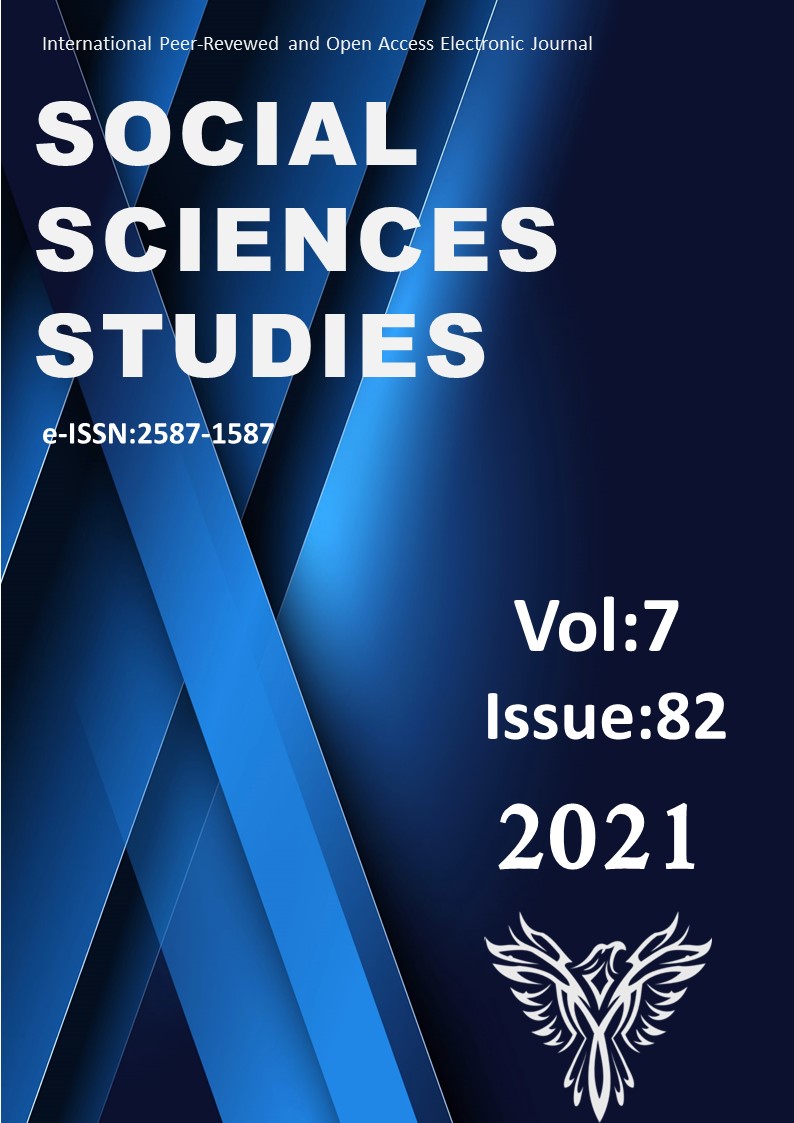ÇOCUK GELİŞİMİ VE SOSYAL HİZMET BÖLÜMÜ ÖĞRENCİLERİNİN ‘RİSK ALTINDAKİ ÇOCUK’ KAVRAMINA İLİŞKİN METAFORİK ALGILARI
Author :
Abstract
ÖZET Bu araştırmanın amacı; Çocuk Gelişimi ile Sosyal Hizmet Bölümü öğrencilerinin “risk altındaki çocuk” kavramına ilişkin sahip oldukları zihinsel imgelerini metafor tekniği kullanarak tespit etmektir. Araştırmanın çalışma grubunu 2019-2020 öğretim yılında Sağlık Bilimleri Fakültesi Çocuk Gelişimi Bölümü ile Sosyal Hizmet Bölümü’nde öğrenim gören toplam 123 öğrenci oluşturmaktadır. Araştırmanın verileri, nitel araştırma yöntemi ile toplanmış, çalışma deseni “olgu bilim” biçiminde düzenlenmiştir. Araştırmaya katılan öğrencilerin “risk altındaki çocuk” kavramına ilişkin sahip oldukları metaforları ortaya çıkarmak amacıyla “Risk altındaki çocuk…… gibidir, çünkü…” ibaresini tamamlamaları istenmiştir. Öğrencilerin ifadeleri bu araştırmanın temel veri kaynağını oluşturmuştur. Bu çalışmadaki metaforlar, Kuyucu ve ark. (2013), Akgün (2016), Gülen ve Dönmez (2020), çalışmalarında oluşturdukları kavramsal kategoriler incelenerek oluşturulmuştur. Elde edilen verilerin analizi sonucunda Çocuk Gelişimi Bölümü öğrencilerinin toplam 40 adet, Sosyal Hizmet Bölümü öğrencilerinin ise 44 adet metafor geliştirdikleri saptanmıştır. “Risk altındaki çocuk” kavramına yönelik Çocuk Gelişimi bölümü öğrencilerinin geliştirdikleri metaforların altı kavramsal kategori, Sosyal Hizmet bölümü öğrencilerinin ise beş kavramsal kategori altında toplandığı görülmüştür. “Risk altındaki çocuk” kavramına ilişkin öğrencilerin oluşturdukları metaforlar kavramsal kategorilere ayrıldığında en çok metafor bulunan kategorinin, Çocuk gelişimi bölümü öğrencilerinde “ilgiye muhtaç bir varlık olarak çocuk” ile “şekillendirilebilen bir hammadde olarak çocuk” Sosyal hizmet bölümü öğrencilerinde ise “ilgiye muhtaç bir varlık olarak çocuk” ile “gizemli bir varlık olarak çocuk” olduğu belirlenmiştir.
Keywords
Abstract
The aim of this study was to identify the mental images of Child Development and Social Word Department students on the concept of “child at risk” through metaphors. The study group comprised 123 students attending Kırıkkale University, Faculty of Health Sciences, Departments of Child Development and Social Word Department in the 2019-2020 academic year. The data of the phenomenological study were collected with qualitative research methodology. The participants were requested to complete the sentence “A child is like … because …,” in order to reveal their metaphors on the concept of “child at risk.” The students’ statements were the primary source of data for the study. The metaphors in this study, Kuyucu et al. (2013), Akgün (2016), Gülen and Dönmez (2020) were created by examining the conceptual categories they created in their studies. As a result of the analysis of the data obtained, It was determined that the Child Development Department students developed 40 metaphors and the Social Work Department students developed 44 metaphors. It has been seen that the metaphors about “child at risk” developed by the students of the Child Development department are grouped under six conceptual categories, and the Social Work students under five conceptual categories. When the metaphors created by students regarding the concept of "child at risk" are categorized into conceptual categories, the category with the most metaphors is "the child as a being in need of attention" and "the child as a raw material that can be shaped" in the students of the child development department, and "as a person in need of attention" in the social service department students. It has been determined that there is a "child" and "a child as a mysterious being".
Keywords
- Akıncı Demirbaş, E., Şahin, H. & Çakmak, A. (2021). “Çocuk Gelişimi Ve Sosyal Hizmet Bölümü Öğrencilerinin ‘Risk Altındaki
- sahip oldukları zihinsel imgelerini metafor tekniği kullanarak tespit etmektir. Araştırmanın çalışma grubunu 2019-2020
- (2013), Akgün (2016), Gülen ve Dönmez (2020), çalışmalarında oluşturdukları kavramsal kategoriler incelenerek





